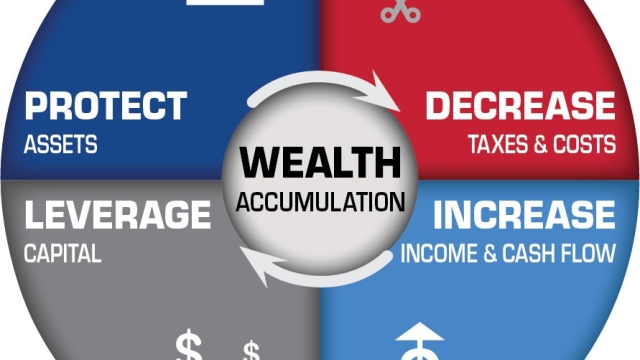Captive insurance, a concept gaining popularity in risk financing, offers businesses a unique and flexible alternative to traditional insurance models. By forming their own insurance company, known as a "captive," businesses can retain control over their risk management strategies, customize coverage to fit their specific needs, and even potentially realize significant tax advantages. One such option is the 831(b) captive insurance company, named after the corresponding section of the IRS Tax Code. Understanding the nuances of captive insurance and the potential benefits it can unlock for businesses is essential for those looking to explore this innovative risk management strategy. In this article, we will delve into the world of captive insurance, particularly focusing on the IRS 831(b) tax code, often referred to as a microcaptive, and the valuable opportunities it can provide. Whether you’re a business owner seeking to reduce insurance costs or a risk management professional curious about alternative risk financing techniques, this article will shed light on the ins and outs of captive insurance and pave the way for unlocking its benefits. So, let’s embark on this journey and discover the potential advantages that captive insurance strategies can offer.
Reserve Your Spot
Understanding Captive Insurance
Captive insurance is a powerful risk management tool that has been gaining popularity in recent years. It offers companies the opportunity to take control of their own insurance needs by creating their own insurance company, known as a captive. This allows businesses to customize their insurance coverage and potentially save on costs in the long run.
One important aspect of captive insurance is the 831(b) tax code, introduced by the IRS. This tax code allows small insurance companies, known as microcaptives, to enjoy certain tax advantages. By electing to be taxed under section 831(b), these microcaptives can potentially reduce their taxable income and save on taxes.
In essence, by forming a captive insurance company, businesses can have more flexibility and control over their insurance programs. It enables them to tailor their coverage to their specific needs, allowing them to address unique risks that may not be adequately covered by traditional insurance policies. This can result in better protection and potentially lower insurance costs in the long term.
Exploring the 831(b) Tax Code
In the world of captive insurance, the 831(b) tax code has gained significant attention. This particular section of the tax code provides a unique opportunity for small insurance companies to take advantage of certain tax benefits. By electing to be taxed under section 831(b), these "micro-captives" can enjoy several advantages that may not be available to larger insurance companies.
One of the primary benefits of the 831(b) tax code is the ability for micro-captives to receive favorable tax treatment on their underwriting profits. Under this provision, insurance companies with less than $2.3 million in annual premiums can exclude these profits from their taxable income. This can result in substantial tax savings for these smaller captives, allowing them to retain more of their earnings.

Another advantage of the 831(b) tax code is the ability for micro-captives to accumulate reserves on a tax-advantaged basis. Generally, insurance companies are required to set aside reserves to cover potential claims. However, under section 831(b), micro-captives can retain these reserves and only pay taxes on the investment income earned on these reserves. This can provide additional financial flexibility for these captive insurers.
It is important to note that while the 831(b) tax code can offer significant benefits, it is also subject to certain limitations and regulations. The IRS has increased its scrutiny of micro-captives in recent years to ensure compliance with the tax rules. It is crucial for captive insurance companies to carefully navigate the complexities of the tax code and work with experienced professionals to ensure full compliance and maximize the benefits of this tax strategy.
By exploring the 831(b) tax code, small insurance companies can unlock the advantages of captive insurance and potentially enjoy increased financial stability and flexibility. As with any tax strategy, it is essential to consult with knowledgeable experts to fully understand the implications and ensure compliance with all regulatory requirements.
Advantages of Microcaptive Insurance
Microcaptive insurance, also known as captive insurance under the IRS 831(b) tax code, offers various benefits for businesses seeking to manage their risks effectively. In this section, we will explore some of the advantages that microcaptive insurance strategies can provide.
Enhanced Risk Management: One of the key advantages of microcaptive insurance is the ability for businesses to gain greater control over their risk management efforts. By setting up their own captive insurance company, they can tailor coverage specifically to their unique needs and risks. This allows for more flexibility and customization compared to traditional insurance policies.
Potential Cost Savings: Another advantage of microcaptive insurance is the potential for cost savings. With a captive insurance arrangement, businesses can retain a portion of the premium payments that would have otherwise been paid to third-party insurers. In addition, any underwriting profits made by the captive insurance company can be realized by the insured business. These potential cost savings can contribute to the financial stability and growth of the business.
Tax Benefits: Microcaptive insurance can also offer certain tax advantages. Under the IRS 831(b) tax code, premiums paid to a microcaptive insurance company by the insured business may be tax-deductible as ordinary business expenses. Additionally, the microcaptive insurance company itself may be eligible for tax-exempt status on its underwriting profits, subject to compliance with IRS regulations. These tax benefits can provide businesses with additional financial flexibility.
In conclusion, microcaptive insurance presents several advantages, including enhanced risk management, potential cost savings, and tax benefits. By understanding and implementing these strategies effectively, businesses can unlock the benefits of captive insurance and better protect themselves against unforeseen risks.


